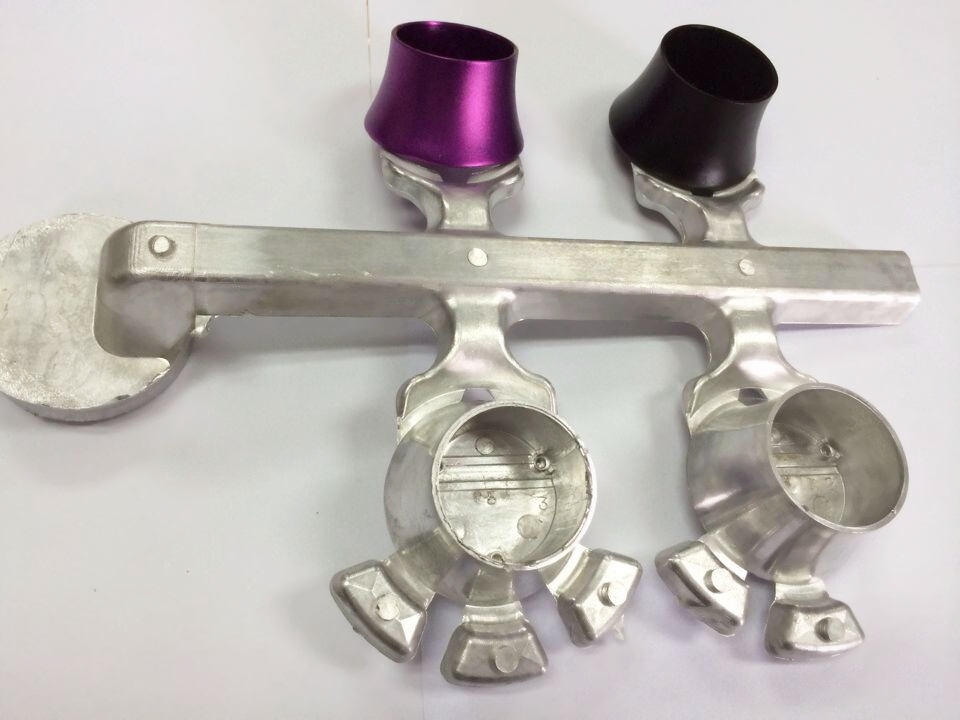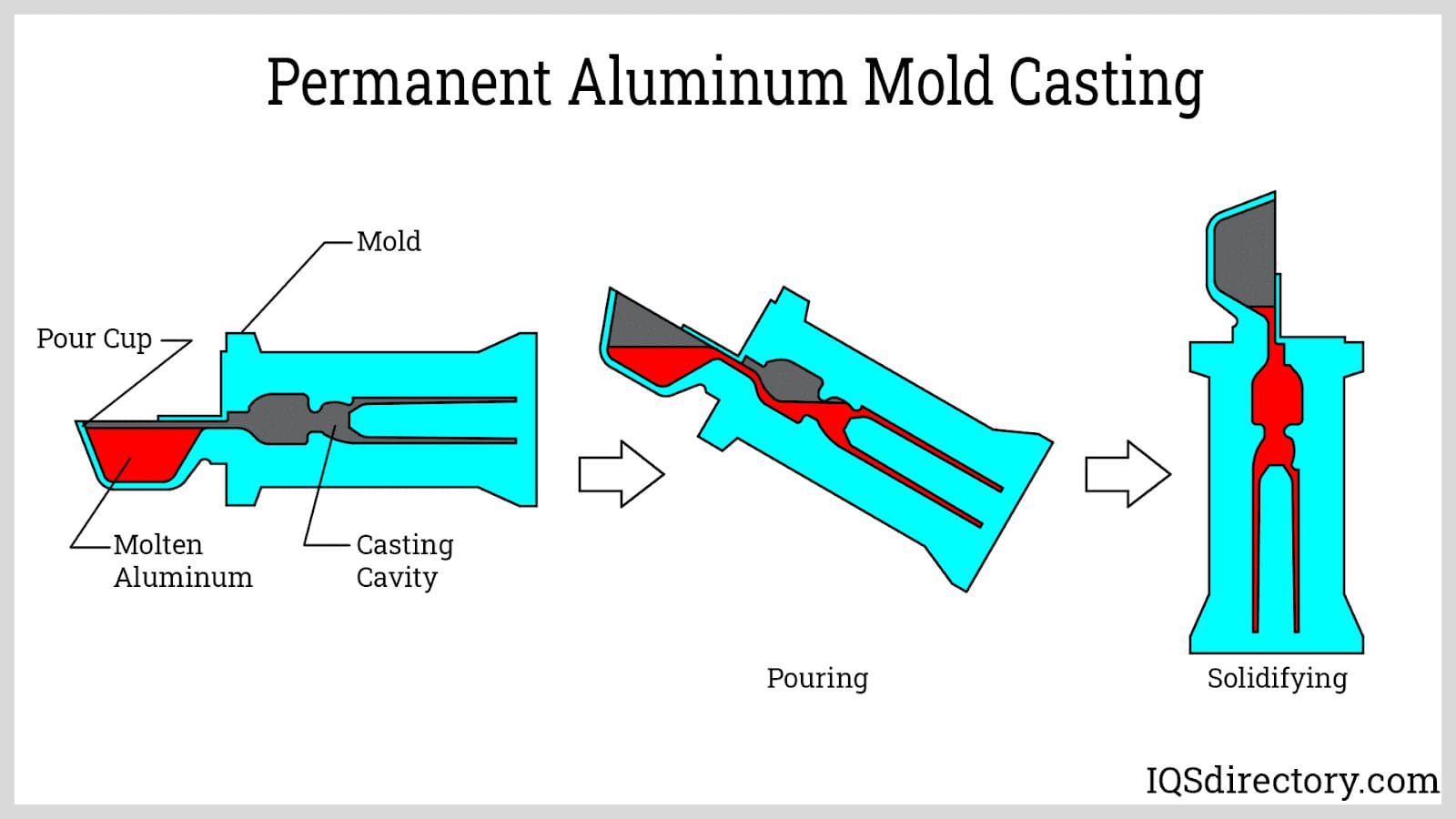The main features that make Aluminum Castings a popular choice
Wiki Article
Everything About Aluminum Castings: Recognizing Their Function and Importance in Manufacturing
Light weight aluminum castings are integral to modern manufacturing, offering a blend of lightweight residential or commercial properties and resilience. They facilitate intricate styles while reducing setting up prices. Industries such as vehicle and aerospace frequently use these elements for improved efficiency. The production of aluminum spreadings is not without its challenges. Recognizing the subtleties of this process discloses both the advantages and prospective pitfalls. Discovering these factors will certainly offer much deeper understandings into their expanding significance.Summary of Light Weight Aluminum Casting Processes
Light weight aluminum casting processes play an essential role in manufacturing, using convenience and effectiveness. These processes entail pouring liquified aluminum into mold and mildews to create accurate forms and components. Different strategies are used, consisting of sand casting, pass away casting, and investment casting, each identified by its method of mold production and the intended application.Sand spreading utilizes a combination of sand and binder to develop mold and mildews, enabling complicated geometries. Die casting, on the various other hand, entails forcing molten light weight aluminum right into metal molds, resulting in high precision and smooth surfaces. Investment spreading, frequently used for detailed layouts, involves creating a wax pattern coated with a ceramic covering, which is after that loaded with liquified light weight aluminum.
These casting techniques deal with diverse industrial demands, making aluminum a favored product for parts in markets such as automobile, aerospace, and consumer goods. The choice of casting method considerably affects the end product's high quality and performance.
Benefits of Utilizing Light Weight Aluminum Castings
The advantages of utilizing light weight aluminum spreadings in manufacturing are various and considerable. To start with, aluminum's lightweight nature adds to lowered total item weight, boosting power effectiveness in applications such as auto and aerospace industries. In addition, aluminum castings exhibit superb deterioration resistance, making certain long life and toughness in severe atmospheres. The material's electrical and thermal conductivity additionally makes it ideal for different applications, including electronic devices and warm exchangers.Additionally, aluminum castings can be produced with complex styles, permitting extra complicated forms that satisfy particular practical needs. This versatility adds to minimized assembly expenses and improved design adaptability. The casting process itself is effective, permitting for high-volume manufacturing with constant top quality. Finally, light weight aluminum is recyclable, making it an eco-friendly option in production. Collectively, these advantages highlight why light weight aluminum castings are progressively preferred throughout varied fields, providing both performance benefits and economic effectiveness.
Usual Applications of Aluminum Castings
While various materials are made use of in production, aluminum castings stand out as a result of their broad range of applications throughout numerous sectors. These castings are commonly made use of in the auto market for engine components, transmission real estates, and architectural components, contributing to lighter cars and improved gas efficiency. In the aerospace sector, aluminum spreadings are vital for airplane components, where weight decrease is crucial for efficiency and safety and security.Furthermore, the electrical market utilizes light weight aluminum castings for housings and structural aspects in machinery, gaining from the material's excellent conductivity. In customer products, aluminum spreadings can be located in things such as appliances and showing off tools, giving sturdiness and a contemporary aesthetic. Furthermore, the building and construction market utilizes light weight aluminum castings in architectural components, home window structures, and components, showcasing their versatility and toughness. Generally, aluminum spreadings play an indispensable function in enhancing item efficiency and effectiveness across numerous fields.
Secret Manufacturing Techniques for Aluminum Castings
The production of light weight aluminum castings counts on numerous techniques, with sand spreading and pass away casting being amongst the most noticeable. Sand spreading involves producing molds from sand, permitting for big parts and complex designs. On the other hand, die casting makes use of high-pressure shot of molten aluminum right into reusable molds, using precision and effectiveness for automation.Sand Spreading Refine
Sand spreading stands as one of the most commonly utilized methods for creating light weight aluminum castings, thanks to its convenience and cost-effectiveness. This process entails creating a mold and mildew from a mixture of sand and a bonding representative, typically clay. When the mold is prepared, molten aluminum is put into it, allowing the metal to load the cavity. After cooling, the mold and mildew is escaped to expose the spreading. Sand spreading suits complex geometries and large components, making it suitable for various applications. go to this website Furthermore, it allows for simple modifications, enabling manufacturers to adjust designs swiftly. Nonetheless, the surface area coating might need extra machining for accurate applications, making certain the end product fulfills high quality criteria.Die Spreading Methods
Pass away spreading represents a highly effective technique for creating aluminum castings, characterized by its ability to deliver high accuracy and superb surface area coating. This method primarily entails requiring molten aluminum right into a mold under high pressure, making certain that complex shapes and fine details are caught precisely. There are 2 primary die casting methods: hot chamber and cool chamber. Hot chamber die spreading is ideal for alloys with low melting points and permits for faster cycles, while chilly chamber pass away spreading is suitable for high-temperature alloys, needing different melting systems. Both approaches improve production prices and minimize material waste, making pass away casting a preferred choice in sectors such as automobile and electronic devices, where longevity and dimensional precision are critical.Sustainability in Light Weight Aluminum Spreading Production
While the need for aluminum castings proceeds to grow, manufacturers are significantly focusing on sustainability in their production procedures. This shift is driven by the demand to lower environmental effect and conserve natural resources. Numerous firms are taking on reusing efforts, making use of scrap aluminum, which significantly lowers energy usage and greenhouse gas exhausts contrasted to primary aluminum manufacturing. Additionally, improvements in casting technologies are making it possible for more effective usage of products, minimizing waste throughout the manufacturing process.Producers are additionally exploring green options to standard spreading methods, such as 3D printing and progressed mold and mildew technologies, which assist maximize source use. Wisconsin Aluminum Foundry. Furthermore, executing lasting practices in supply chain administration guarantees that basic materials are sourced responsibly. Because of this, the light weight aluminum spreading market is making strides towards a more sustainable future, aligning with global ecological objectives while fulfilling the increasing need for high-performance aluminum products
Obstacles and Factors To Consider in Light Weight Aluminum Casting
Aluminum casting presents various challenges that manufacturers should browse to ensure product stability. Style complexity can complicate the casting process, resulting in potential issues and raised manufacturing time. Furthermore, keeping extensive quality assurance requirements is important to fulfill the needs of precision and reliability in ended up components.
Layout Intricacy Issues
Creating components for light weight aluminum casting provides different intricacies that engineers should browse to attain suitable outcomes. One considerable difficulty is the demand for specific geometry; detailed styles can bring about troubles in mold and mildew development and raised threat of flaws. Furthermore, thermal properties of light weight aluminum require cautious consideration of cooling prices, as irregular air conditioning can create bending. Wall density variants additionally position a challenge, as they can impact flow characteristics and architectural stability. Designers need to stabilize style visual appeals with manufacturability, guaranteeing that features such as ribs and fillets are maximized for stamina without making complex the spreading procedure. Finally, considerations pertaining to draft angles are vital to help with mold and mildew launch, additional complicating the design procedure. These factors jointly underscore the ins and outs associated with light weight aluminum casting style.Top Quality Control Difficulties
Achieving high-quality light weight aluminum spreadings involves maneuvering a variety of quality assurance difficulties that can considerably impact the end product. Variants in raw material composition can lead to variances in casting residential or commercial properties, making it vital to assure material high quality. Second, the spreading procedure itself is susceptible to problems, such as porosity and shrinking, which can endanger architectural integrity. Furthermore, temperature level control throughout melting and putting is essential; fluctuations can result in unequal solidification, impacting dimensional accuracy. Complete examination approaches, including non-destructive testing, must be employed to determine flaws early. Keeping stringent procedure documents and adherence to market criteria is vital for traceability and high quality assurance, highlighting the elaborate balance called for to create trustworthy light weight aluminum spreadings in production.Future Patterns in Aluminum Spreading Technology
As suppliers venture to improve efficiency and my website sustainability, innovations in aluminum casting modern technology are emerging to fulfill these demands. One substantial fad is the combination of automation and expert system, which improve manufacturing processes and boost precision in casting procedures. These advancements lessen human error and optimize resource usage, ultimately bring about cost decreases.Furthermore, the fostering of innovative materials and alloys is improving the landscape. New solutions boost performance features, such as rust resistance and lightweight residential or commercial properties, making light weight aluminum spreadings a lot more versatile across various industries.
In addition, sustainable practices are getting grip, with a concentrate on recycling and lessening waste. Methods such as 3D printing are also being discovered to develop intricate geometries that were formerly unattainable
Regularly Asked Inquiries

Just How Do Light Weight Aluminum Castings Contrast to Other Materials?
Aluminum spreadings supply advantages such as look at this now lightweight, deterioration resistance, and superb thermal conductivity compared to other products. They are commonly preferred for applications requiring toughness and effectiveness, specifically in automobile and aerospace sectors.What Is the Life-span of Aluminum Castings?
The lifespan of light weight aluminum spreadings generally ranges from 10 to 50 years, depending upon ecological problems, usage, and upkeep. Their rust resistance and sturdiness add significantly to their durable efficiency in numerous applications.Can Light Weight Aluminum Castings Be Reused?
Yes, aluminum spreadings can be reused. The recycling procedure is effective, permitting the recovery of light weight aluminum without considerable loss of high quality, making it a sustainable selection in manufacturing and decreasing environmental influence.What Safety Measures Are Needed Throughout Aluminum Spreading?
During aluminum casting, important precaution include putting on appropriate personal protective tools, ensuring proper air flow, preserving tools, utilizing fire-resistant products, and carrying out safe taking care of procedures for molten metal to stop injuries and crashes.How Do Temperature Level Changes Influence Aluminum Castings?
Temperature modifications significantly affect aluminum spreadings by affecting fluidity, solidification prices, and mechanical buildings. Quick cooling can cause increased brittleness, while gradual air conditioning advertises better structural honesty and lowers the risk of flaws.Pass away casting, on the various other hand, entails compeling molten aluminum into metal mold and mildews, resulting in high accuracy and smooth coatings. The manufacturing of aluminum castings depends on numerous methods, with sand spreading and pass away casting being among the most noticeable. Sand spreading stands as one of the most widely utilized methods for creating light weight aluminum spreadings, thanks to its convenience and cost-effectiveness. Die spreading stands for a highly effective technique for creating light weight aluminum spreadings, identified by its capacity to deliver high precision and outstanding surface finish. While the need for light weight aluminum spreadings proceeds to expand, suppliers are significantly focusing on sustainability in their manufacturing processes.
Report this wiki page